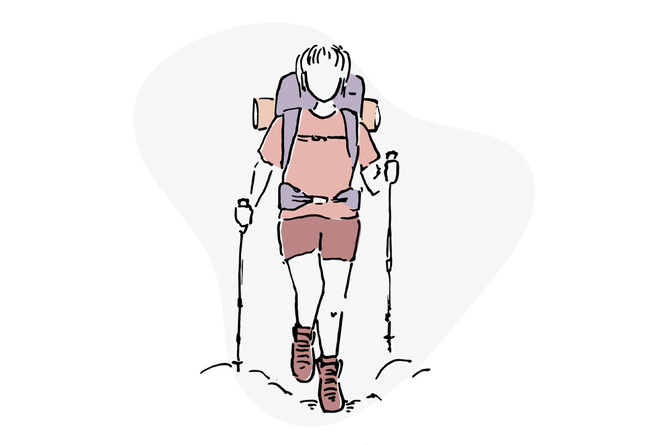POP at 61 / Story at 65
I’m an active woman of 65, who tramps, cycles, swims, dances and does yoga, and have been living with pelvic organ prolapse for four years.
It started when, as well as my usual walking, swimming, and cycling, I worked on a landscape project in my garden that involved a lot of heavy lifting. I was 61 and hadn’t paid much attention to my pelvic floor for years.
I noticed what I thought was a lump in my vagina, but was in fact, a prolapsed cervix. I ignored it for a while, but then thought I’d better get it checked. I was given a prescription for ‘Ovestin’ (an estrogen cream) and referred to a physio practice that specialised in pelvic organ collapse. They fitted me with a cube pessary, and taught me a raft of exercises. I practiced the exercises diligently for a few months, but over time dropped to only doing them sporadically. A gynaecologist told me that I could have surgery if things got worse, but to persevere with the pessary if it was working for me.
That was four years ago. Since then I have continued to do most of the outdoor activities I enjoy, with modifications. That said, the pessary is not ideal. It sometimes moves, and I feel that it’s not supporting things as well as it should be. I have been told not to lift anything over 10 kilos. I have the option of using a different type of pessary, so will try that if need be.
During lockdown my partner and I bought a double sea kayak. It’s heavy. We have a set of wheels, but it’s impossible to avoid lifting it at times. He does the donkey work, but I find myself helping him. Not a good idea with a prolapse.
I still tramp, but have to be super disciplined about keeping my gear light. I’m looking to buy a lighter pack and sleeping bag, so that I can still do overnights without carrying too much weight. I’m not sure what the future holds, but I am sure of one thing: I plan to stay active for a good while yet.
My main support person in all this is my husband. He is keen to help in any way he can if it means we can still do the outdoor things we enjoy together. My sister, who is a physio, is also an important source of support. She runs Pilates classes that I attend, and she has focused me on improving my core strength and posture, as well as teaching me a greater awareness of the bio dynamics of movement.
When I tramp, I now think about the way I’m using my core muscles for walking, rather than just relying on the strength in my legs. I’m learning to tramp with poles as I also have arthritis in my left knee.
Before my experience I really didn’t have too much awareness of pelvic organ prolapse. I think my mother may have had some problems, but she was never specific about it, and, as far as I know, she never had surgery. Also, I had heard on the news about women who’d had mesh inserted and how it had failed and who were now living with ongoing pain.
I have had three children, my last child being born when I was 36, and, being a busy mum with a part time teaching job throughout that time, did very few pelvic floor strengthening exercises after the births of my children. In hindsight, I wish I had had far more awareness of the risk of pelvic organ prolapse and been offered childcare so that I could commit to a regular exercise programme, as doing the exercises at home when you are tired and busy is very hard.
Living with pelvic organ prolapse is certainly a challenge. It does take a mental and emotional toll. I have had to rethink aspects of my physical life and spent money on physio visits and pessaries. However, in the bigger picture, it is not life threatening, and, handled right, doesn’t have to prevent you from being active.



